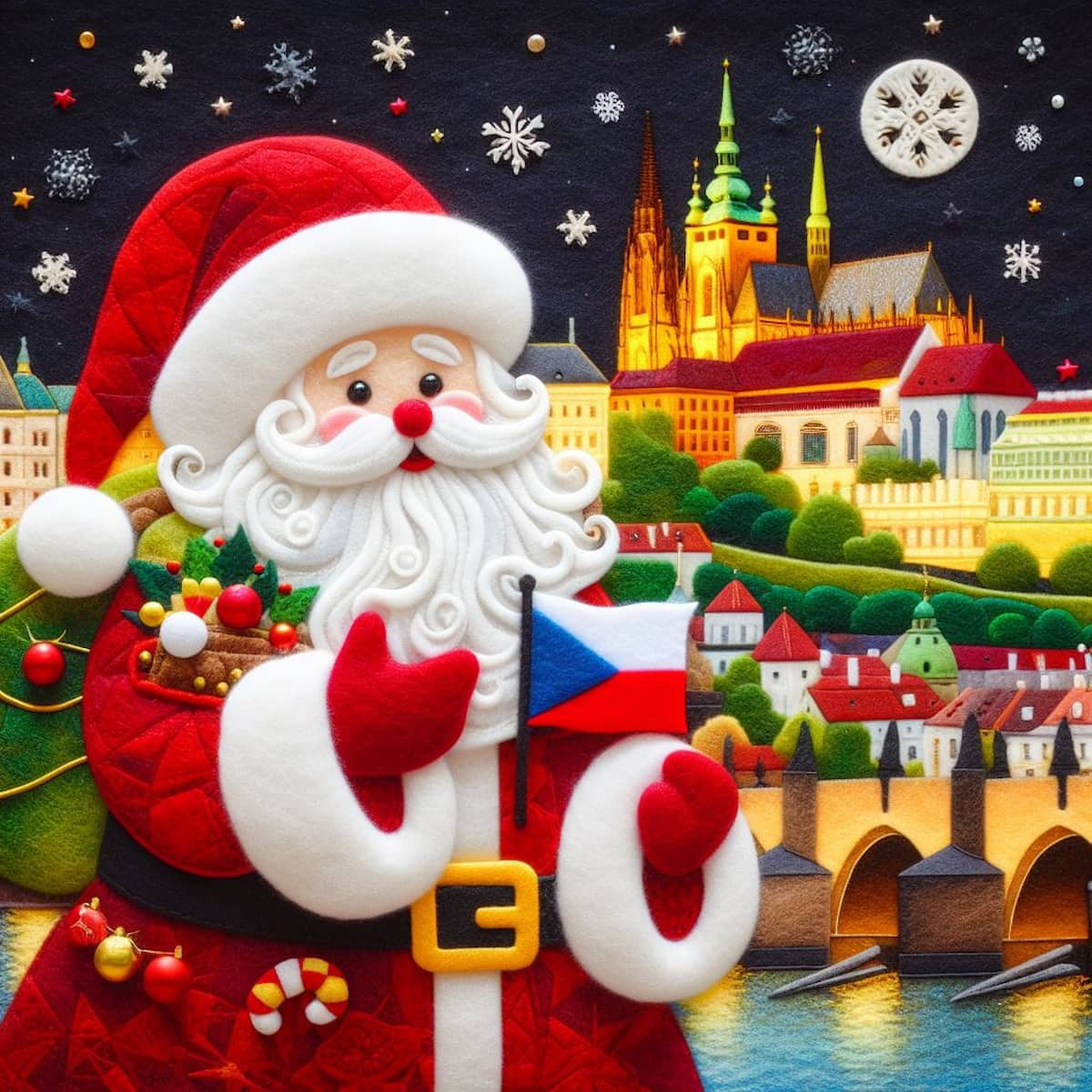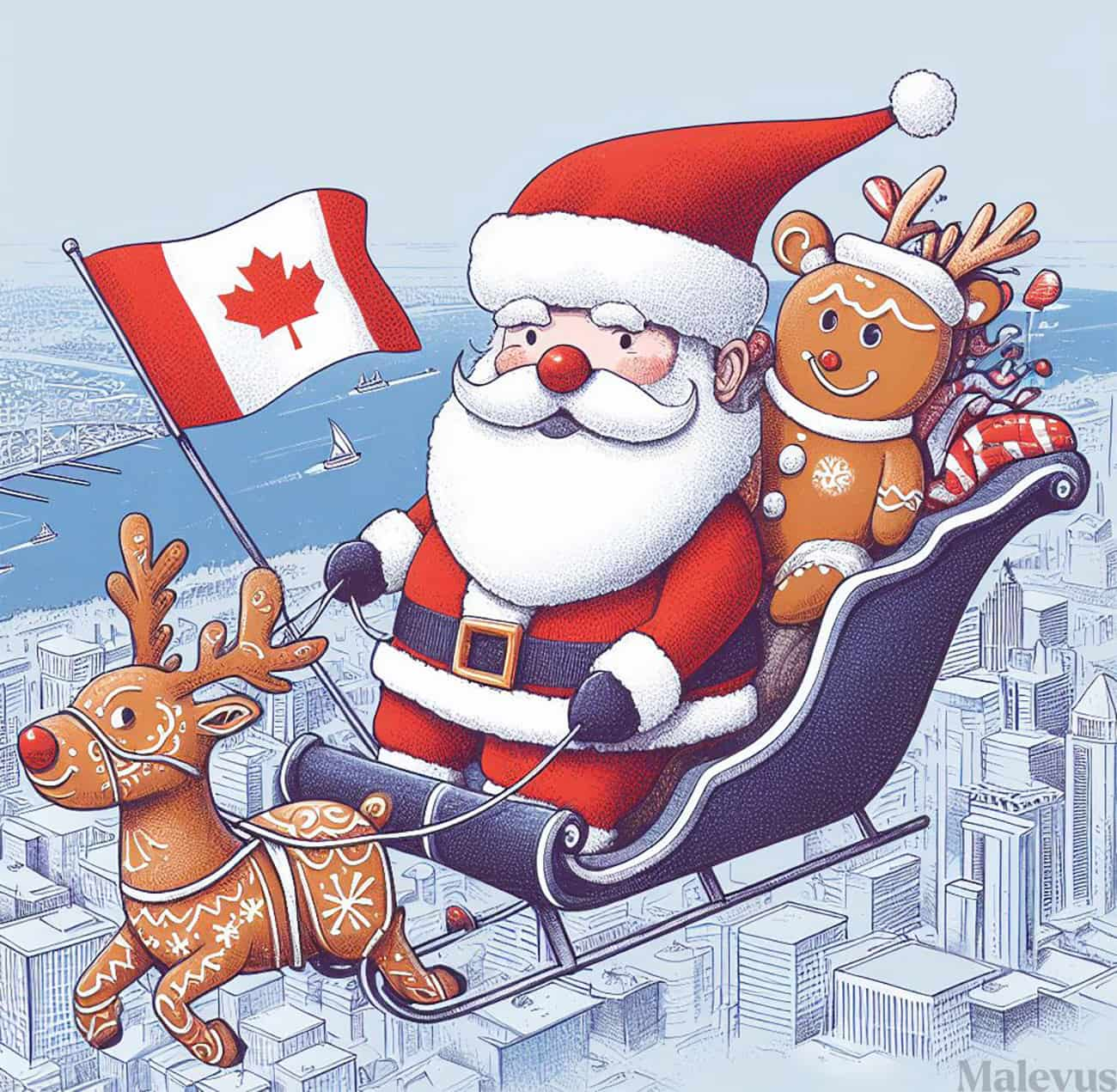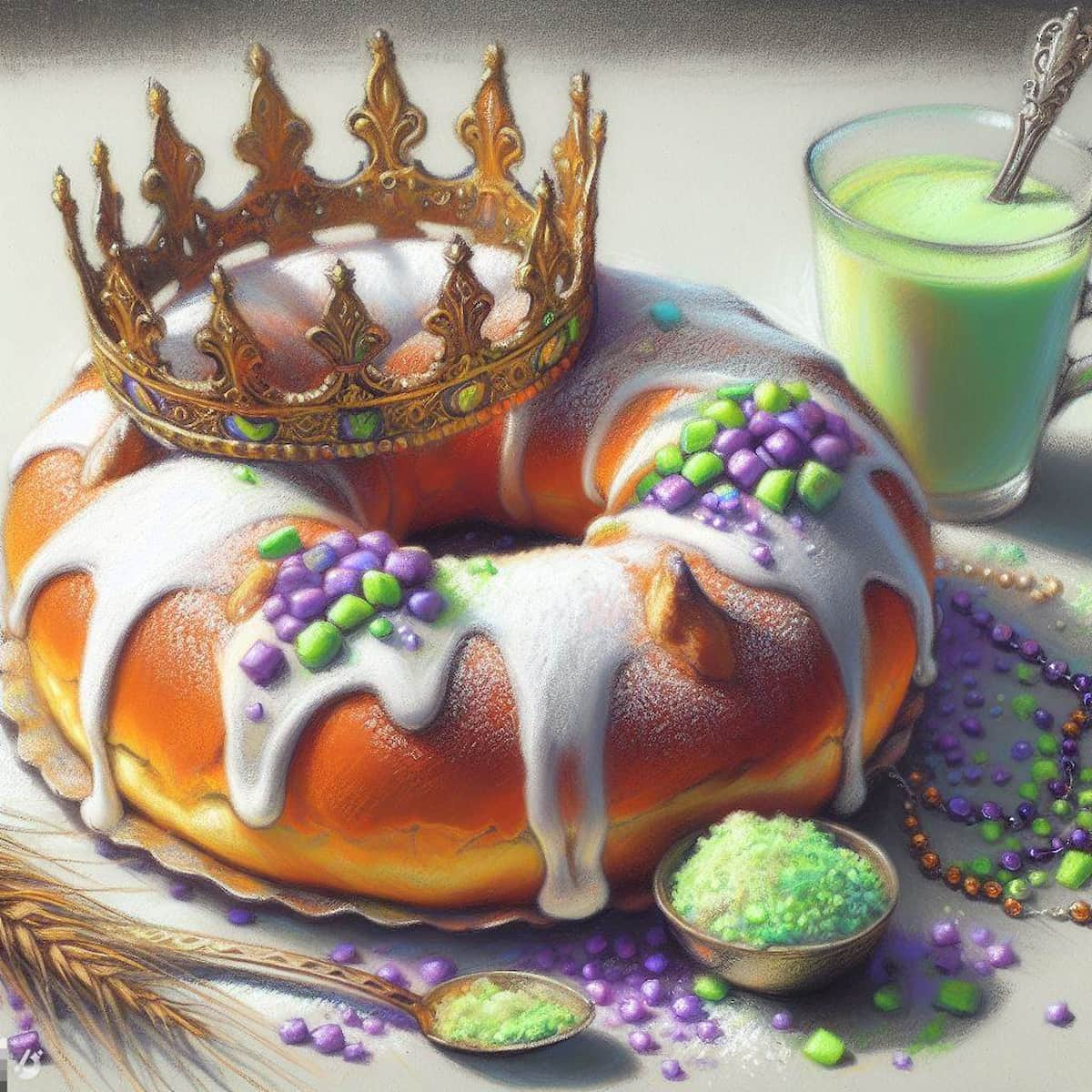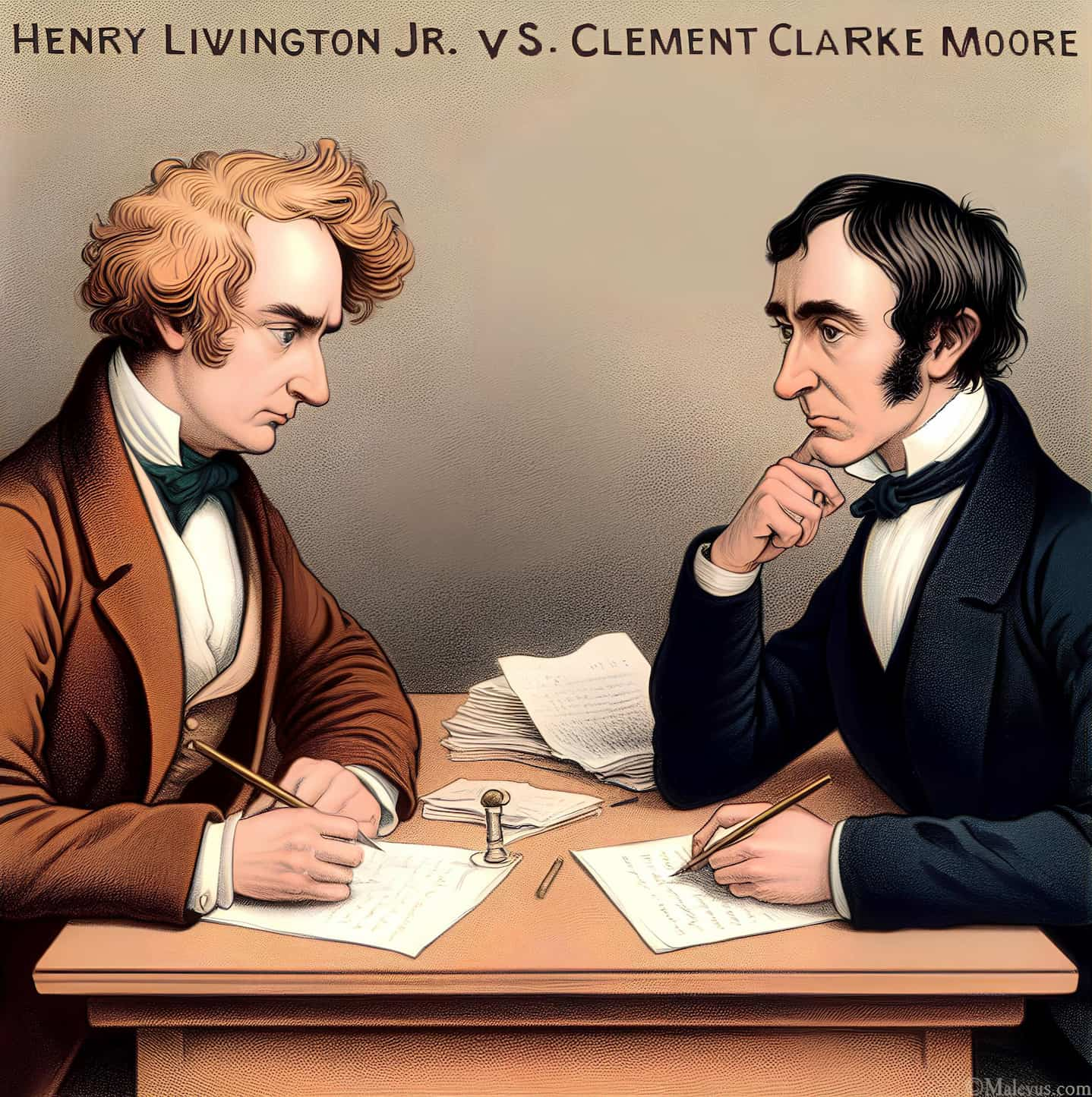Christmas in the Czechia is a party with plenty of customs. On Christmas Eve, the party starts with a fried carp feast. The fish is occasionally kept alive in the bathtub until it’s time to cook. On Christmas Eve, the Christmas tree is dressed up with decorations, apples, and chocolates. Baba Jesus (Ježíšek) provides gifts to youngsters instead of Santa Claus. Some people believe that slicing an apple in half reveals the fate of the person for the next year. Live nativity scenes, ice skating, and the world-famous Prague Christmas Market are part of the public celebrations. On December 5th, Czech children get goodies from St. Nicholas, demons, and angels during the celebration of St. Nicholas Day.
-> See also: All 15 Countries That Don’t Celebrate Christmas
Christmas Traditions in Czechia
“Christmas” is called Vánoce in Czech and Merry Christmas is “Veselé Vánoce.” In the twentieth century, Christians made up more than 90% of the Czech population. Since then, the country’s religious identity has changed significantly. Only 11 percent of the population claims Christian faith today. Traditions and customs contribute to Czechia’s Christmas celebrations and here are a few of the most beloved ones, including holy figures and superstitions:

- Štědrý den: The most beloved day of this season, Christmas Eve (Štědrý den) is celebrated on December 24th by the Czechs. There are a lot of superstitions about love, life, and the future that revolve around this time of night.
- Fasting and the “Golden Piglet”: When Czechs fast on Christmas Eve, they look to the wall for a glimpse of the “Golden Piglet” before supper. Many people think this symbol brings them luck.
- Czechian Christmas Dinner: Fish soup (made of carp), fried carp, and potato salad are served on Christmas Eve at the traditional Czech meals.
- Vizovické Pečivo (Figures): Czechs use traditional decorations like Vizovické Pečivo, a mixture of flour, water, and vinegar, to make their Christmas trees look better.
- Ježíšek (Baby Jesus): The Czech children think that Baby Jesus, also known as Ježíšek, enters the room through the window to leave presents for Christmas, and it is customary to unwrap presents immediately after supper.
- Půlnoční mše (Midnight Mass): Attending the midnight mass (půlnoční mše) at a nearby church is a way for some individuals to round off Christmas Eve.
- St. Nicholas Day (Št. Mikuláš): Separate from Christmas Day, on December 5th, children await the arrival of St. Nicholas and his helpers. After asking the kids whether they’ve been nice throughout the year, St. Nicholas allegedly hands them a basket full of gifts.
- Carp Scales and Good Financial Luck: Traditional Czech dinners include carp, and lucky charms made of the fish’s scales are kept in wallets as a good luck charm.
-> See also: 48 Countries That Celebrate Christmas Widely
History of Christmas in Czechia
In the Czech lands, the Christmas tree was prepared for the first time in 1812 by the director of the Estates Theatre, J. K. Liebich, at his Libeň chateau for his friends. The new custom then began to gain popularity in wealthy Prague bourgeois families and later in rural households. It is also customary to set up nativity scenes, known as betlémy, for Christmas. In Bohemia, this tradition first appeared in 1560 at the Church of St. Clement in Prague. The character of Christmas is also significantly influenced by carols, and the Czech tradition of caroling is particularly rich. Children from wealthier families did not participate in caroling because their parents did not allow them to beg. On Three Kings‘ Day, children performed theatrical plays with Christmas themes, and the most common reward was money.
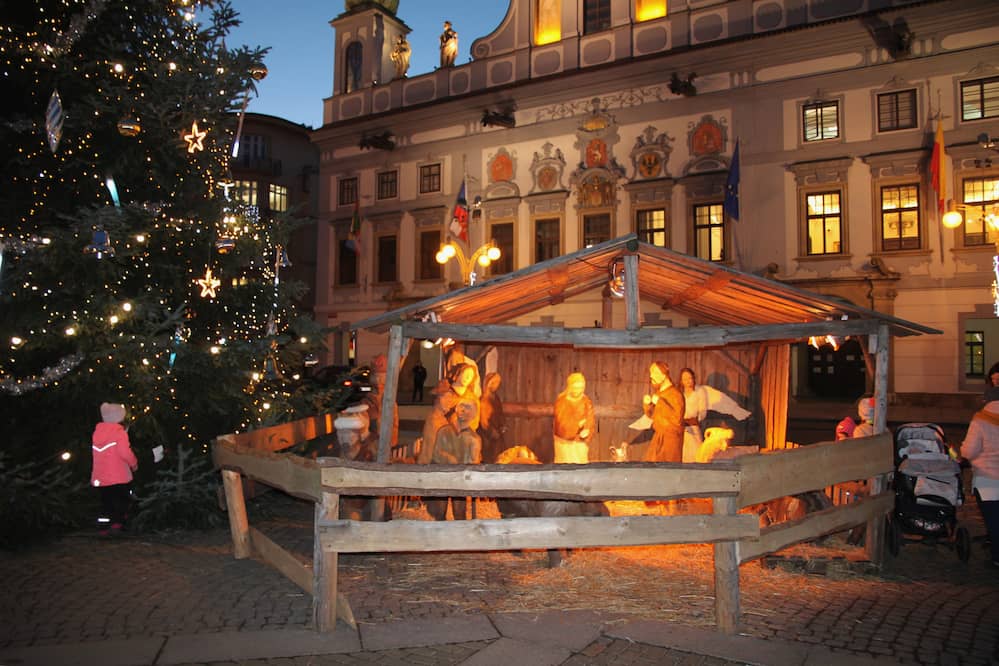
Traditional Czech Christmas Cuisine
Many traditional meals and beverages are enjoyed during Christmas celebrations in Czechia. Below are the most beloved ones you can expect:
- Bramborový Salát (Potato Salad): Carp and potato salad go hand in hand for Czech Christmas food. The main ingredients are boiled eggs, potatoes, mayonnaise, pickles, and vegetables.
- Vánočka (Christmas Bread): A traditional Czech Christmas delicacy called Vánočka is filled with raisins and made of yeast dough. Whether it’s slathered with butter or eaten dry, it’s a popular snack. This bread is created with almonds and raisins to symbolize Baby Jesus wrapped in fabric. It is braided and has a lovely appearance.
- Christmas Cookies: Several weeks before Christmas, they are baked, and there are various variations to choose from. Other classic Christmas treats are gingerbread men adorned with white frosting.
- Eggnog (Egg Liqueur): A traditional Czech Christmas drink, egg liqueur, or eggnog, is available in shops but is also often made at home by many.
- Řízek (Schnitzel): Fried carp and potato salad are traditional Czech holiday dinner fare but if you’re not a fan of carp, another popular option is fried schnitzel, which may be made with either pork or chicken.
- Roast Meat, Dumplings, and Cabbage: For Christmas lunch on December 25th and 26th, it’s common for Czech households to offer roast beef with dumplings and cabbage.
- Rybí Polévka (Fish Soup): Made with carp, this is a traditional Christmas dish. Soup is an important Czech staple and is the first course on the menu.
- Český Kapr (Carp): The star of the Czech Christmas food menu is carp—fried carp at that. Some Czechs buy their fish before Christmas (usually from the Christmas markets) and keep it in the tub until it’s time to prepare and eat it.
Places to Visit in Czechia at Christmas

During the holiday season, a trip to Czechia is a must. With their one-of-a-kind handcrafted wares, Czech Christmas markets are especially a hotspot for visitors.
Prague: During the winter, the capital city of Prague is breathtaking, where thousands visit Old Town to see the Christmas trees. There are hundreds of booths offering local foods, gift ideas, and decorations at the world-famous Prague Christmas Market, which is held in the main plaza. Throughout December, Prague welcomes visitors with live nativity scenes and ice skating.
Brno: Another fantastic winter destination. Old Town Square is the site of the annual Brno Christmas Market, which takes place in the heart of the city. Music, children’s shows, and other acts are a few of the cultural offerings during Brno’s Christmas activities. Featuring a children’s petting zoo and a wooden nativity scene, the Dominican Square is devoted to families, children, and foodies.
Český Krumlov: It is a castle and is only a short distance from Prague. For 38 days, visitors to Svornosti Square may peruse a wide array of goods at the Christmas market here, which features traditional crafts, cuisine, and beverages. Also, it has a cultural program that runs on weekends. Among the unique things to do at the market is to stop by the Christmas post office to write letters to Santa Claus.
Christmas Art in Czechia
Visual Arts
In depicting Christmas in the visual arts, paintings prevail in Czech and the sculptural representations, except for reliefs and folk nativity scenes, are actually rare. In Czechia, a famous artist known for paintings of Christmas motifs in the 20th century was Josef Lada. However, his characteristic and beloved works fell into obscurity among the younger generation at the beginning of the 21st century due to copyright costs. Relatively well-known were Disney Christmas characters and a widespread form of visual art with Christmas motifs was folk carving, which, with a focus on Christmas, centered on puppets and nativity scenes.
Biblical
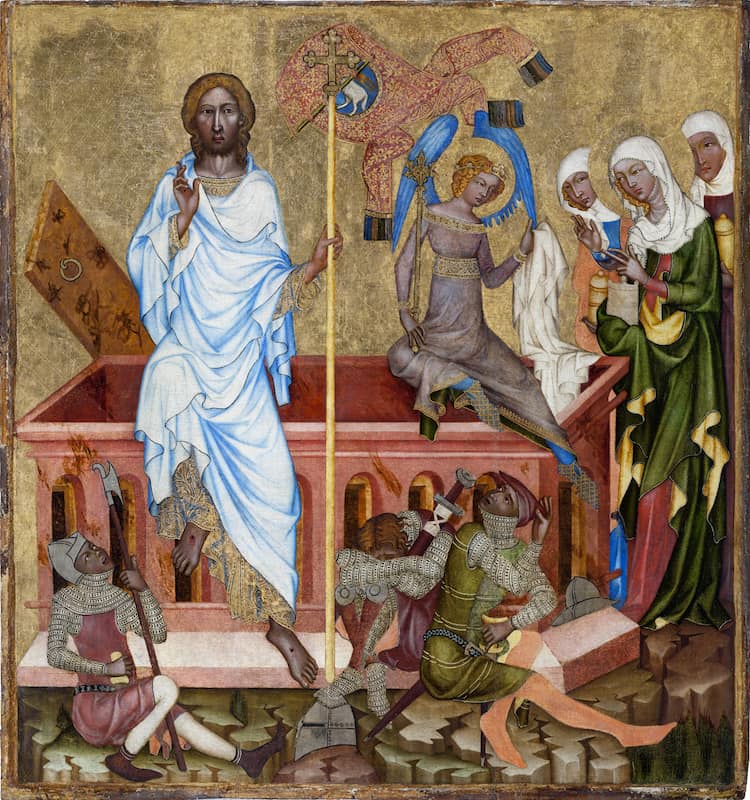
In both Czech and European Gothic art, Christmas events were usually depicted as part of Christological cycles. An example is the Vyšší Brod Cycle by the Master of the Vyšší Brod Altar from the Czech lands. The Birth of Christ in this cycle contains numerous secondary iconographic motifs, which is typical for Gothic art.
From the second half of the 14th century, under the influence of the increasing emphasis on Christ, the motif of the Adoration of Christ often appears, where Mary bows to baby Jesus. An example is the Adoration of Our Lord from Hluboká by the Master of the Třeboň Altar. In the painting Adoration of the Magi by Giotto di Bondone from 1304–1306, the depiction of the Bethlehem star as a comet, a common representation since then, first appears.

In the late Gothic and early Renaissance, motifs of the adoration of the shepherds and the arrival of the three kings were often combined. An example is the unfinished Adoration of the Magi by Leonardo da Vinci. In paintings from this period, kneeling donors also frequently appear. In the adoration of the three kings, they sometimes even take on the appearance of one of the kings. High Renaissance and especially Baroque depictions once again aim for intimacy, even in paintings with many figures, as seen in the Adoration of the Magi from Smiřice (a town in the Czech Republic) by Petr Brandl.
In the post-Baroque secularizing environment, depictions of Christmas events moved to the sentimental aspect of folk art, such as carved nativity scenes, often containing hundreds of figures, depicting a range of peripheral and entirely anachronistic motifs and events. An exception are the sometimes movable nativity scenes, mainly from the late 19th century. In “high” art, they appeared rather exceptionally. In the 19th century, for example, in the works of the Nazarenes (a Jewish Christian sect), and in the 20th century, in the graphics of some Catholic-oriented creators in the Czech lands, for instance, Bohuslav Reynek.
Literature
The theme of Christmas appears primarily in literature from the time of the National Revival in Czechia (an 18th–19th-century cultural movement). The authors used it to spread Czech awareness, culture, and traditions. Descriptions of Christmas or Christmas themes can be found in both poetry and prose. The collection “Kytice” (Bouquet, 1853) by Karel Jaromír Erben includes the ballad “Štědrý den” (Christmas Eve). Two girls go to the lake on Christmas Eve to see the future, according to an old belief in the waters of the lake. One sees a wedding, and the other dies. Both come true within a year.
“Hail, you Christmas Eve,
you mysterious celebration,
what goodness do you bring
in memory for everyone?To the farmer, a generous tip,
to the cows as their reward;
to the rooster, garlic,
and peas for his companion.To the fruit-bearing trees,
bones from the dinner,
and golden coins on the wall
for those who observe the fast.”
— Karel Jaromír Erben, Bouquet, Christmas Eve
Jan Neruda authored “Romance štědrovečerní” (Christmas Eve Romance, Ballads and Romances, 1883) and “Ukolébavka vánoční” (Christmas Lullaby, Songs of Friday, 1896). The Mrštík brothers detailed Christmas in Slovácko in “Rok na vsi” (A Year in the Village, 1903–1904).


